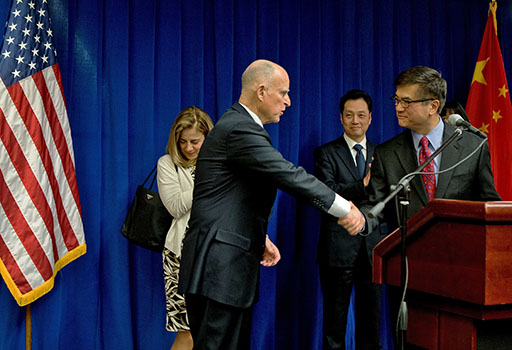5.1 A realm of cooperation?
In 2013 Forbes magazine commented:
The confluence of media hyperventilation over China’s inexorable rise to global preeminence and U.S. politicians’ habits of scapegoating China for their own failures spawned a popular impression of China as an adversary in a zero-sum game. In that game, exports are considered Team America’s points, imports are Team China’s points, and the trade account is the scoreboard. Since the scoreboard showed a deficit, the United States was portrayed as losing at trade and it was losing because China perpetually cheats.
And yet, in the BBC World Tonight audio that you listened to in Section 4 you heard claims that there existed numerous levels of contact and discussion, information sharing and cooperation between the United States and China. This is an image of their relationship that sits at odds with some of the more strident commentary on both sides. There are sound issues of economic self-interest that explain why such contacts and discussion go on.

Many analysts point to the mutual gains that are made by both states together. In order to try to manage these gains – while dealing with genuine areas of conflict – governments on both sides conduct ongoing and often cooperative exchanges on economic matters.
Another landmark economic event was China’s accession to the World Trade Organisation (WTO) in 2001. It was one of the most significant examples of a process of China ‘joining’ a Western-made economic order (as John Ikenberry characterised it in Section 2). On joining, China had to make a series of commitments to abide by WTO rules and alter significant parts of its domestic policy to comply with WTO standards. Despite this, many in the United States argue that China does not ‘play by the rules’. Forbes magazine listed the accusations:
Currency manipulation, subsidization of industry, dumping, intellectual property theft, discrimination against imports, forced technology transfer, indigenous innovation policies, raw material export restrictions, and other allegations of cheating came to define Chinese trade practices. … Of course, some of the allegations had merit.
Nevertheless, the article went on to say that the state that was most often the subject of WTO disputes was not China but the United States. By 2013, the United States was involved in 119 cases, China in 30 cases. (The EU had 73 cases against it.)
